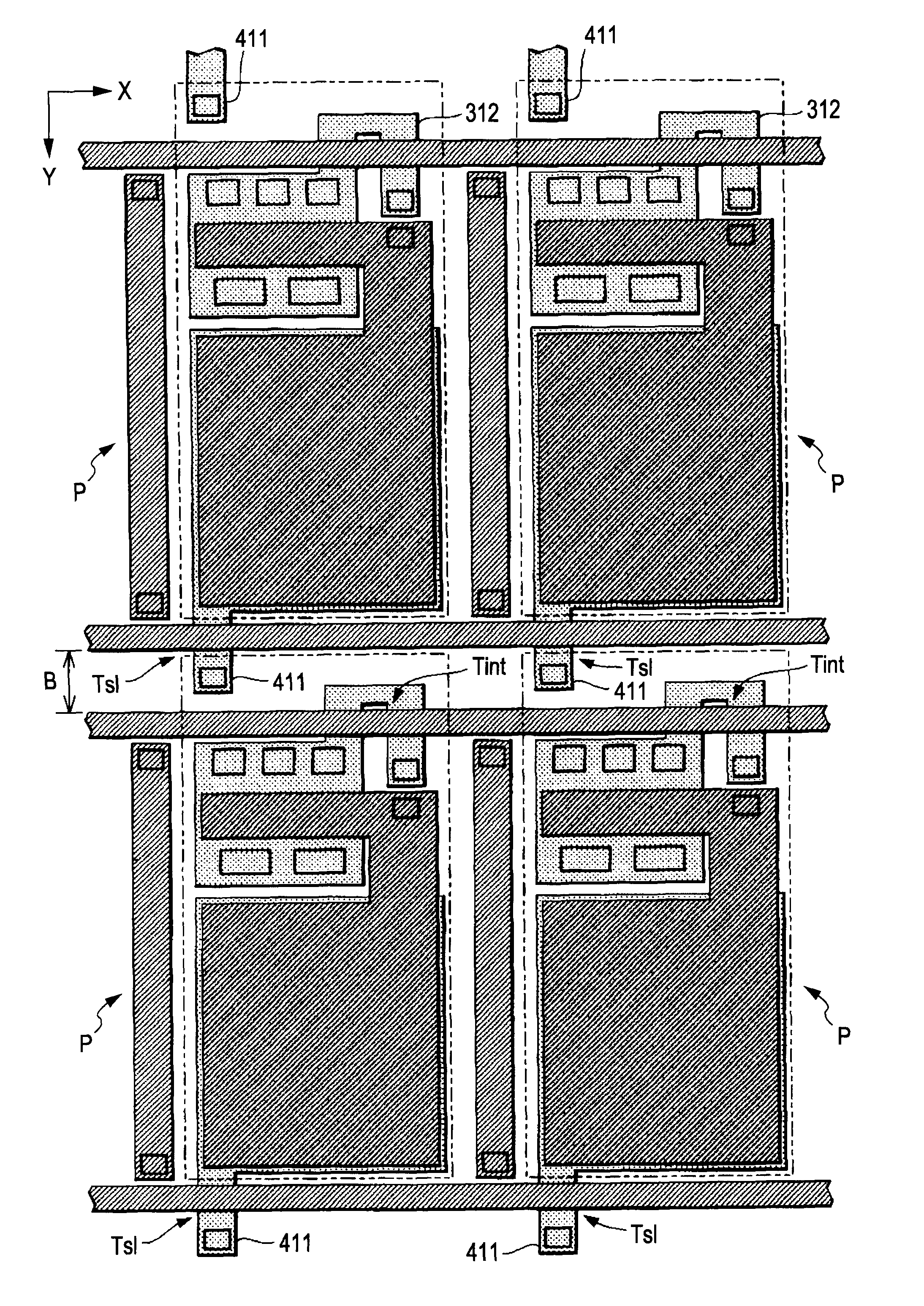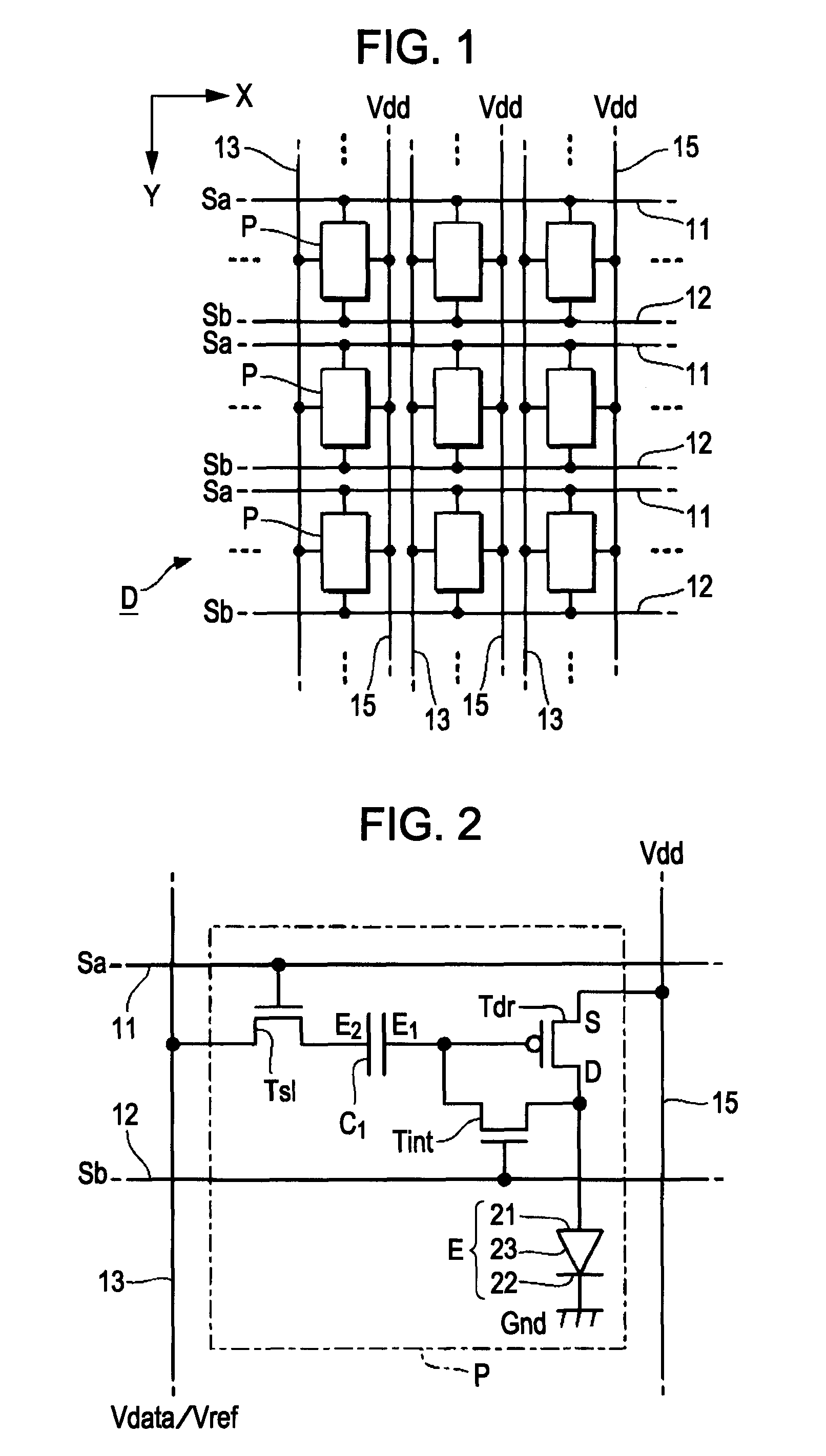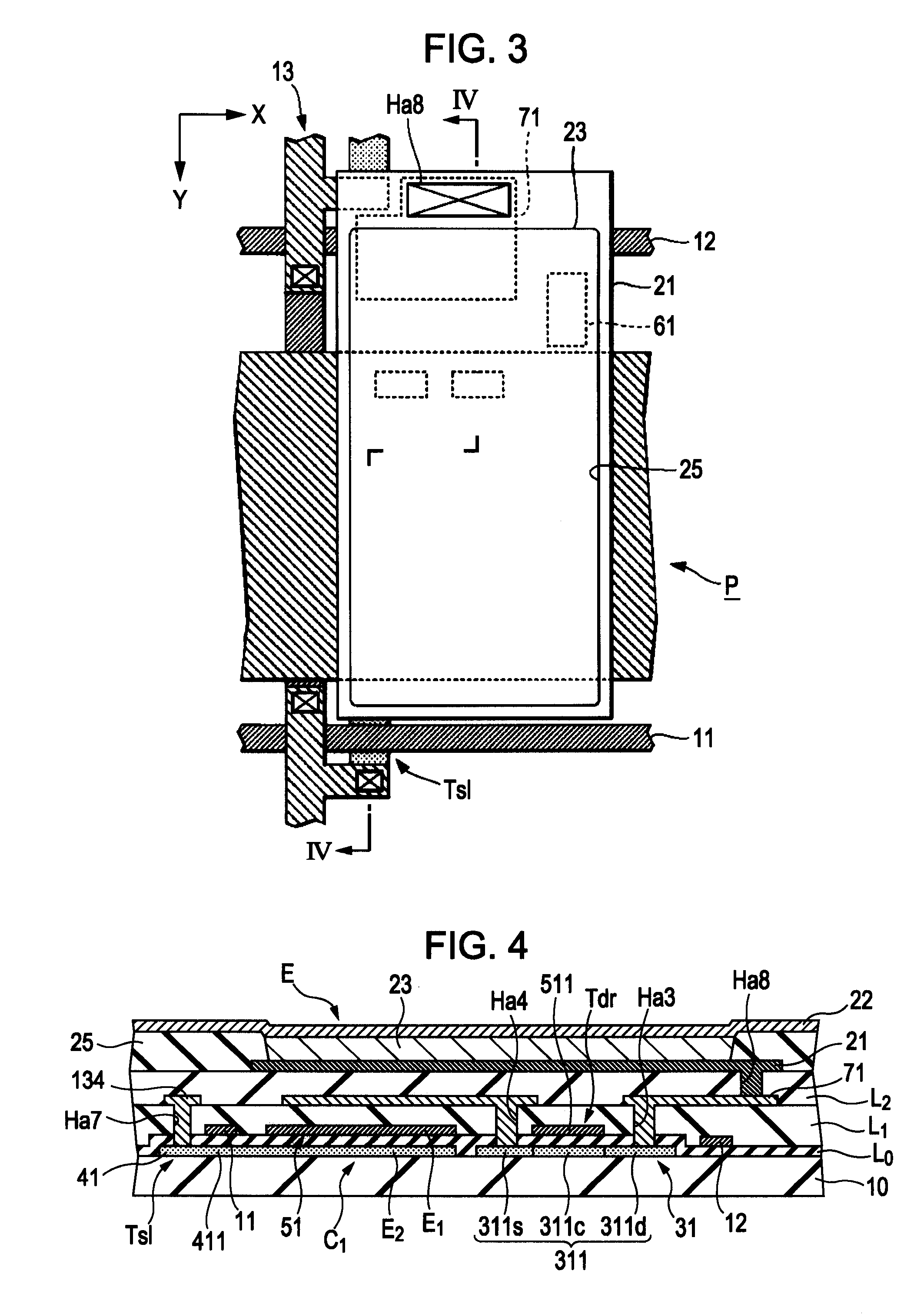Light-emitting device and electronic apparatus
a technology of light-emitting devices and electronic devices, which is applied in the direction of static indicating devices, semiconductor/solid-state device details, instruments, etc., can solve the problems of increasing manufacturing costs, insufficient reduction complicated manufacturing process, etc., and achieves simplified manufacturing process, reduced manufacturing costs, and suppression of resistance of power supply lines
- Summary
- Abstract
- Description
- Claims
- Application Information
AI Technical Summary
Benefits of technology
Problems solved by technology
Method used
Image
Examples
first embodiment
[0062]A description is given below of the specific structure of the unit elements P of the light-emitting device D according to a first embodiment of the invention. FIG. 3 is a plan view illustrating one unit element P, and FIG. 4 is a sectional view taken along line IV-IV of FIG. 3. Although FIG. 3 is a plan view, for easy understanding, the components shown in FIG. 3 corresponding to the counterparts in FIG. 4 are hatched in a manner similar to the counterparts in FIG. 4. The same applies to the other plan views.
[0063]The components, such as the drive transistor Tdr and the light-emitting element E, of the unit element P shown in FIG. 2 are formed, as shown in FIG. 4, on the surface of a substrate 10. The substrate 10 is a planar member composed of an insulating material, such as glass or plastic. When forming the components of the unit element P on the surface of the substrate 10, an insulating film, such as a silicon oxide or silicon nitride film, covering the substrate 10 may b...
second embodiment
Modified Examples of Second Embodiment
[0124]A modified example of the above-described second embodiment is as follows. FIG. 17 is a plan view illustrating the unit element P in the processing step shown in FIG. 14 in which the first insulating layer L1 is formed. In the second embodiment, the gate electrode 521 of the drive transistor Tdr is extended in the Y direction. In this modified example, however, as shown in FIG. 17, the gate electrode 521 of the drive transistor Tdr is extended in the x direction. In this modified example, elements similar to those of the second embodiment are designated with like reference numerals, and an explanation thereof is thus omitted.
[0125]The intermediate conductor 52 of this modified example includes an interconnecting portion 525 extending from the top left of the electrode E1 toward the negative side in the Y direction and the gate electrode 521 which extends in the x direction from interconnecting portion 525 and which is overlapped with the s...
modified examples
[0130]Various modifications can be made to the above-described embodiments. Specific modified examples are as follows. The following modified examples may be combined if necessary.
PUM
 Login to View More
Login to View More Abstract
Description
Claims
Application Information
 Login to View More
Login to View More - R&D
- Intellectual Property
- Life Sciences
- Materials
- Tech Scout
- Unparalleled Data Quality
- Higher Quality Content
- 60% Fewer Hallucinations
Browse by: Latest US Patents, China's latest patents, Technical Efficacy Thesaurus, Application Domain, Technology Topic, Popular Technical Reports.
© 2025 PatSnap. All rights reserved.Legal|Privacy policy|Modern Slavery Act Transparency Statement|Sitemap|About US| Contact US: help@patsnap.com



